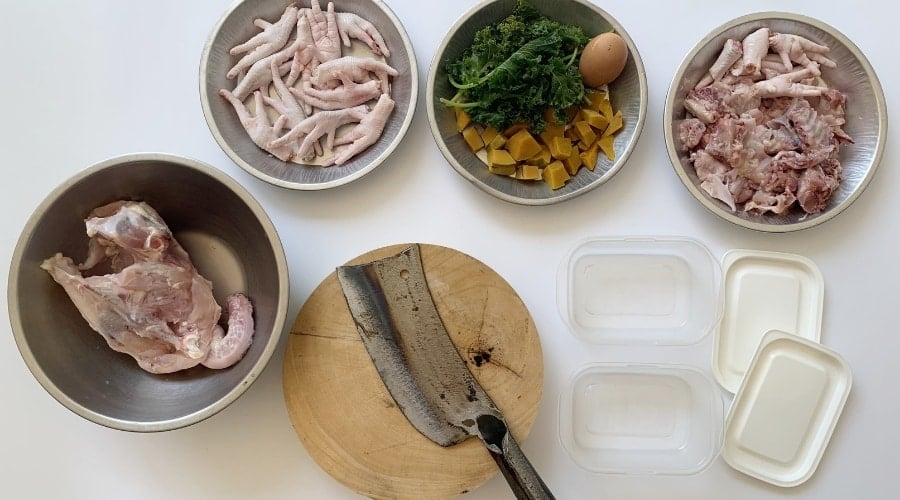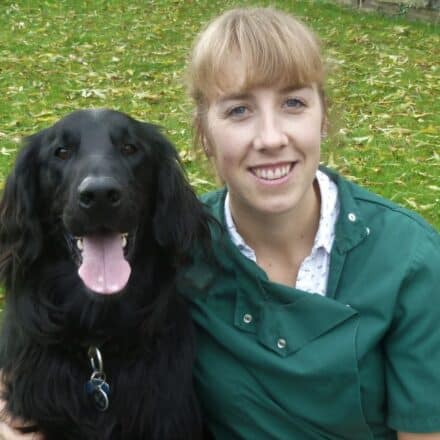Lots of people enjoy eating kale for its “superfood” health properties. So, it’s only natural to wonder if our dogs could also benefit from the nutrients that this vegetable contains. Let’s look at whether it is safe for your dog to eat kale and dive into its possible risks and benefits.
Most dogs get all the nutrients they need from a good-quality complete commercial dog food, so unless your vet advises otherwise, you shouldn’t need to add any supplements.
But many pet parents may have leftover veggies of their own that they don’t want to go to waste. Or perhaps they just want to add some fresh produce to their dog’s diet. In this case, it’s vital to know which ones you can safely share with your pet and which you can’t.
Is Kale Safe For Dogs?

Moderation is key if you want to give it to your dog, but remember there are plenty of other vegetables that you could choose to give them instead.
You can make kale safer for your dog by choosing organic to minimize the amount of potentially harmful thallium it contains (although even this is no guarantee). This toxic heavy metal is found in soil, and its uptake into plants varies considerably between different plant species. Kale and other brassica-type plants are known as hyperaccumulators of thallium, with the highest concentrations being found in the leafy green part of the plant.
Thallium poisoning is a rare possibility for dogs that eat kale. It could cause symptoms such as trembling, seizures, elevated body temperature, and even death. However, a dog would need to eat a lot of kale or have it on a regular basis for this to occur.
Is Kale Good For Dogs?

There are lots of nutrients packed into this leafy green plant that dogs, as well as people, could potentially benefit from.
Iron
Like many other dark leafy green vegetables, kale is rich in iron, which helps prevent anemia. Animals will tend to get most of their iron from meat-based sources, but kale can be a good choice for people.
Calcium
Kale is a good source of plant-based calcium. Calcium is a mineral that is important in the health of bones and teeth. The oxalate also found in kale helps to make this calcium more readily absorbed. However, oxalate can cause issues in some dogs, especially those that are prone to bladder stones.
Vitamins
Kale contains vitamin C, which aids in maintaining a healthy immune system as well as skin and connective tissue. Dogs don’t require an external source of this as they can manufacture their own. But this does make kale a good choice for humans looking to up their vitamin C intake. Vitamin E is also present, which again helps with the immune system, along with vitamin K, which is important for blood clotting.
Fiber
Vegetables such as kale can provide a good source of insoluble fiber, which aids with healthy digestion. It is worth remembering that too much fiber could cause problems, so only feed in moderation.
Antioxidants
Antioxidants are compounds that mop up free radicals that cause oxidative damage to cells in the body. This sort of damage can contribute to health conditions like cancer. More research is needed into the role of vegetables and reducing cancer risk, but the studies are promising.
Can Kale Be Poisonous?

The vegetable is not poisonous, and small amounts of kale are unlikely to cause harm, but compounds found within it could lead to problems. This is more likely if kale is fed in large quantities or regularly, though.
Calcium oxalate can contribute to kidney and bladder stones. Dogs that have suffered from bladder stones in the past or are at higher risk of developing them should avoid kale. Calcium oxalate stones are diagnosed more commonly in the following breeds, so you should take extra care with them.
- Shi Tzus
- Miniature Schnauzers
- Bichon Frise
- Lhasa Apso
- Yorkshire Terrier
Isothiocyanates are thought to potentially reduce the risk of cancer in humans as well as provide other benefits, but they can cause gut irritation in dogs. This can lead to vomiting and diarrhea. Large amounts could be toxic or lead to pronounced tummy troubles. Therefore, it is best only to feed small quantities of kale to reduce the risk of this occurring.
Take Care With Raw Kale
Raw kale is also thought to cause issues with the thyroid gland, possibly lowering its activity. Green vegetables, including kale, contain goitrogens, which may stop the body from absorbing iodine as effectively, causing the thyroid gland to become impaired.
Avoid feeding kale to dogs who are already hypothyroid as it could interfere with the effectiveness of their medication and make their health condition harder to manage. Cooking the kale deactivates these goitrogens, though, making it much safer.
Other Veggies Dogs Should Avoid
When considering the safety of kale, it is also worth knowing that some other vegetables are potentially harmful to dogs. These include the following:
- Onions, leeks, shallots, and garlic – These are all members of the allium family, and they are all toxic to dogs. These vegetables can cause hemolytic anemia, a condition that affects the red blood cells causing them to become damaged.
- Corn on the cob – While corn on the cob is not toxic to dogs, it could obstruct your dog’s digestive tract if they were to swallow the cob or a large chunk of it.
- Raw potatoes – Uncooked potatoes contain solanine, which is a glycoalkaloid poison. Raw potatoes or potato peelings could cause a slow heart rate, digestive upset, and possible vision issues.
- Chili peppers – Chili peppers contain capsaicin, something that could irritate your dog’s stomach, causing tummy upsets, with vomiting and diarrhea.
What Vegetables Are Safe For Dogs To Eat?

Most people already know that carrots and cucumbers are good choices, so the following list features some slightly alternative ones for you to try. Just remember to stick to the 10% rule (vegetables should make up no more than 10% of the volume of your dog’s daily rations), and only ever feed occasionally to avoid tummy troubles.
Zucchini
Zucchini is non-toxic and is safe to feed to your dog in moderation. It is fed raw or cooked but can be a little bit bland or even bitter. Many dogs do enjoy the texture of zucchini so that it can make a great low-calorie treat.
Pumpkin
Cooked or even canned pumpkin is safe for dogs, as long as it isn’t seasoned. You should avoid raw pumpkin, as it can be quite hard to digest. Pumpkin flesh is a good source of fiber and contains vitamins A, C, and E, as well as lycopene and potassium. The seeds are also safe to feed to dogs as long as they have been cleaned and roasted, without any salt or seasonings.
Peas
All types of pea are safe for dogs to eat, including garden peas, petit pois, and sugar snaps. Fresh or frozen peas are safe to feed but avoid canned peas, which may contain added salt. Peas are high in protein, and an antioxidant called lutein, which is good for the heart, skin, and eyes.
Lettuce
Lettuce is safe to feed dogs, but while it may have a similar leafy texture to kale, many dogs won’t want to eat it as it can be bland and watery. Some dogs will especially enjoy crunching on crisp iceberg lettuce. Lettuce has high water content and lacks nutrients compared to other veggies.
Green Beans
Green beans are non-toxic vegetables that can be eaten raw or cooked. Avoid giving vegetables that have been canned in saltwater or that have been heavily seasoned for your dog to enjoy them safely. Green beans are an excellent source of fiber that can help with digestion and provide vitamins A, C, and K.
Celery
While not all dogs will enjoy the taste of celery, it is a good low-calorie crunchy snack. Celery contains vitamin A (good for eyesight), vitamin K (good for blood clotting), and fiber.
Frequently Asked Questions

How much kale can I give my dog?
You should only give very small amounts of kale to your dog on an occasional basis. It must never make up more than 10% of the volume of his daily rations. Otherwise, you could cause a stomach upset.
Can dogs eat kale cooked?
Yes, this is perfectly safe, as long as the kale is not heavily seasoned or served in any sauce. In fact, kale is best served cooked to dogs as this destroys goitrogens in the vegetable that can impair the function of the thyroid gland at high levels.
Should I take my dog to the vet if he eats kale?
This is usually not necessary, particularly if your dog has only consumed a small amount. In most cases, your dog will only suffer from a self-limiting stomach upset if he’s eaten some kale as a one-off. But, it is best to always call your veterinarian if you have any concerns.
Final Thoughts
Kale has some brilliant health benefits for people, and while a nutrient boost can be excellent for our dogs, you should take caution with this vegetable. With kale finding its way more and more onto the dining table, it is wise to understand why it should probably stay exclusively on the human table.
Yes, your dog can eat kale, as long as only in small, infrequent amounts due to the previously described risks. It is best served cooked, and definitely avoid giving it raw to hypothyroid animals.
To keep everyone’s health in mind, consider offering Fido other safer vegetables like carrots, zucchini, or some of the others listed above. And never force him to eat anything he doesn’t like.





